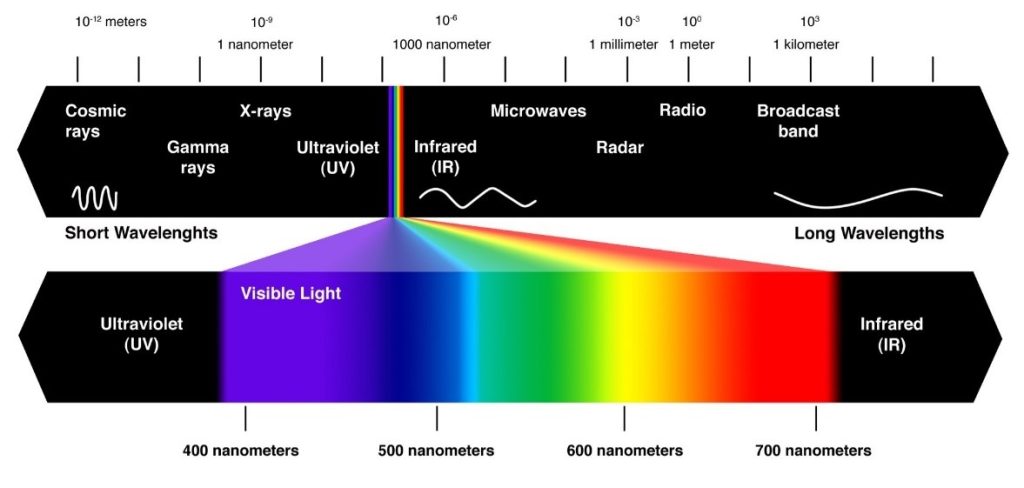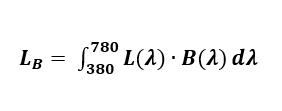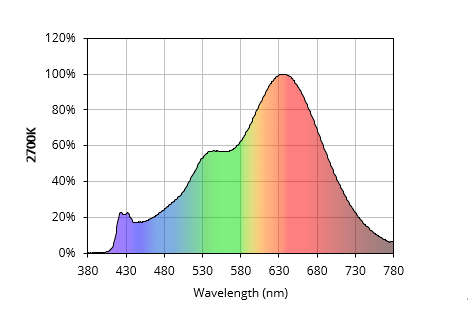Understanding the blue light hazard
What is exactly the blue-ray hazard?
Blue light is a kind of high-energy short wave visible light (HEV), which refers to the blue part of visible light. Its harm is mainly concentrated in the 380 nm ~ 450 nm band. For people who often engage in outdoor activities, the main source of blue light is sunlight, while indoor man-made sources include fluorescent lamps, LED lamps and display screens of electronic equipment. The 450 nm ~ 500 nm blue light can bring us certain benefits. An appropriate amount of blue light can also let us enjoy health and vitality. But going beyond the limit is as bad as falling short, too much blue light will bring some danger. Excessive blue light radiation can cause oxidative stress response of retinal cells, cause irreversible photochemical damage and aggravate cell damage in macula. This is what we usually call “blue light hazard”.

What is the criteria for judging Blue light hazard?
The standard of blue light hazard can be judged according to the optical biosafety test standard IEC 62471. IEC 62471 is a comprehensive parallel standard that describes all potential health hazards, including the ultraviolet part of the spectrum to the visible and infrared parts. According to the retinal blue light hazard exposure limit defined in iec62471, the size of blue light injury is mainly determined by the blue light weighted irradiance, the blue light weighted irradiance and the duration of exposure to blue light, and the blue light weighted irradiance is equal to the value of multiplying the spectral irradiance of the blue light band by the blue light hazard weighting function, and then integrating the wavelength:

In order to prevent retinal photochemical damage caused by long-term blue light radiation, the maximum allowable irradiation time:
T(max) = 1000000/LB(s) (t<<10000s)
The greater the weighted radiance of blue light, the less the maximum irradiation time allowed.
What is the specific hazard of Blue light?
Blurred vision and visual fatigue
Due to the length of blue light wave, if you want to see objects clearly under the stimulation of blue light, your eyes will be in a tense state for a long time, causing visual fatigue and inability to concentrate, which directly affects our study and work efficiency.
Aggravating macular diseases
Excessive blue light will lead to the decline of retinal epithelial pigment cells, cell death in light sensitive areas, macular disease, fundus disease, vision loss and even blindness.

Disrupt human physiological rhythm
Blue light stimulates the brain, inhibits melatonin secretion
and improves the production of adrenocortical hormone, so as to regulate heart
rate, alertness, sleep, body temperature and gene expression, disrupt human
physiological rhythm, and the consequence is naturally unable to sleep at night
and get up in the morning. It also increases the risk of diseases, especially
breast cancer and colorectal cancer.
Should we
eliminate the blue light completely?
According to scientific research,
the retina of mammalian eyes includes three types of photoreceptors: cone cells
that are responsible for seeing during the day, rod cells that are responsible
for seeing at night, and endogenous light sensitive retinal ganglion cells
(ipRGCs) that are not responsible for seeing. These ipRGCs are not idle and
have powerful functions. They sense the blue-green light components (460-550
nm) in the light source, are responsible for reporting the brightness of light
to the brain, regulating the circadian rhythm and pupil contraction, and
affecting our sleep, mood and learning ability. This is why blind people can
also feel day and night changes, and there is also pupil reflex to light.
460-500 nm blue light is beneficial!
Blue light can stimulate the spirit and reduce depression, so it is used to
treat seasonal mood disorders (winter depression). Blue light can improve sleep
quality. With the growth of age, the lens of the eye turns yellow, the absorbed
blue light increases, the blue light entering the eye during the day decreases,
and the secretion of melatonin is affected. Therefore, the elderly are prone to
sleep disorders.
Blue light is an indispensable
element of natural light and white light lighting. Since the birth of human
beings, they have been living under the natural light with blue light. What we
should do is to understand the characteristics of blue light, so as to
effectively avoid harm without affecting our full use of it.
Yuji Lighting
SunWave™ series, designed for regulating the Blue light hazard
Based on the Yuji Lighting SunWave™ technology,
we can utilize the blue light adequately but avoid the hazard efficiently. The tailor-made
spectrum increases the 480nm and reduces the 450-460nm energy which is
recognized as the main wavelength of blue hazard, therefore the Yuji Lighting
SunWave™ series is not only helping with concentrating, but improving the
healthy lighting simultaneously.

As shown in the spectral power distribution above, SunWave™ series are designed at the spectral level to limit disruption to restful sleep by utilizing a proprietary blend of long wavelength phosphors. The result is a spectral distribution that produces natural light, but simultaneously limits the impact on melatonin suppression. With a 2700K color temperature and 98 CRI rating, objects appear natural and vivid.
